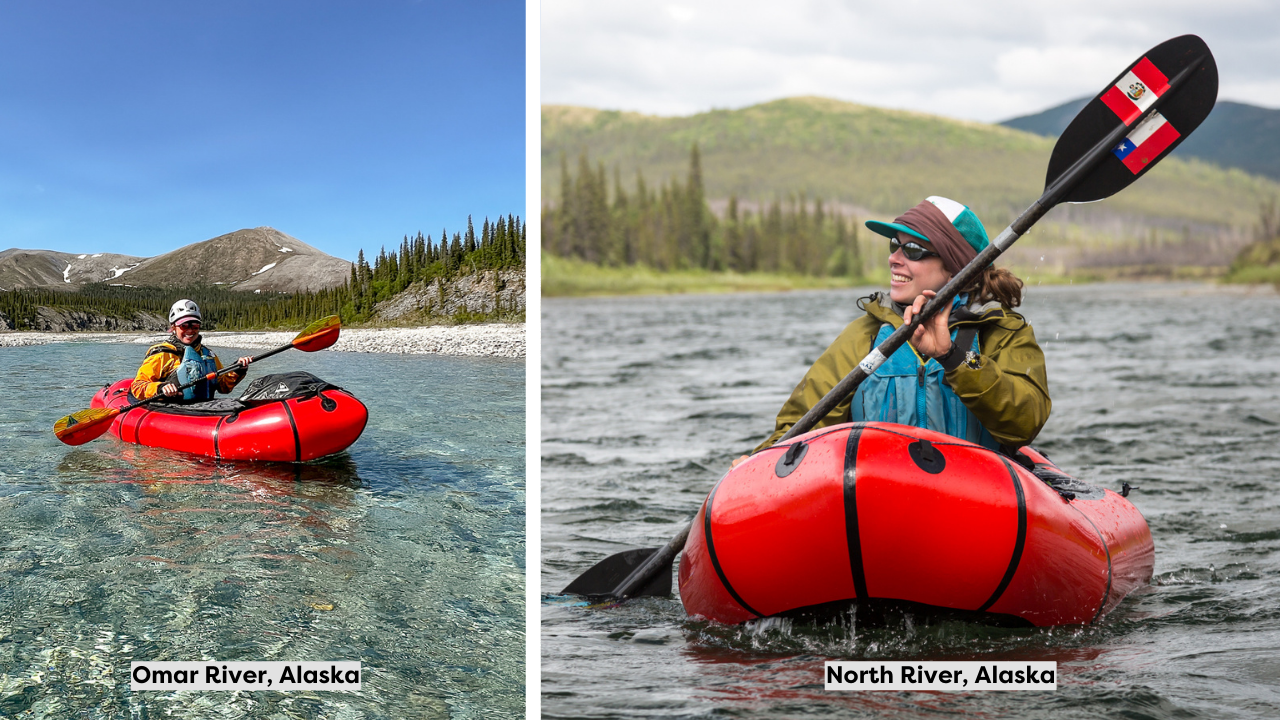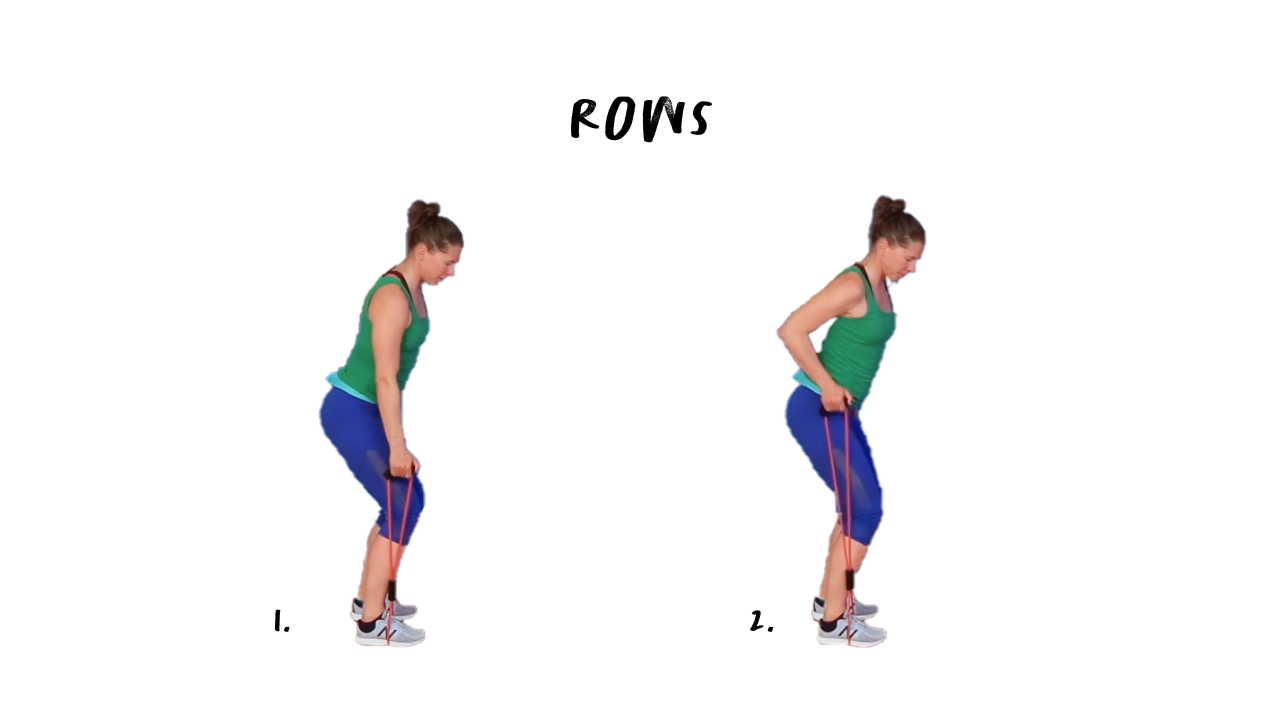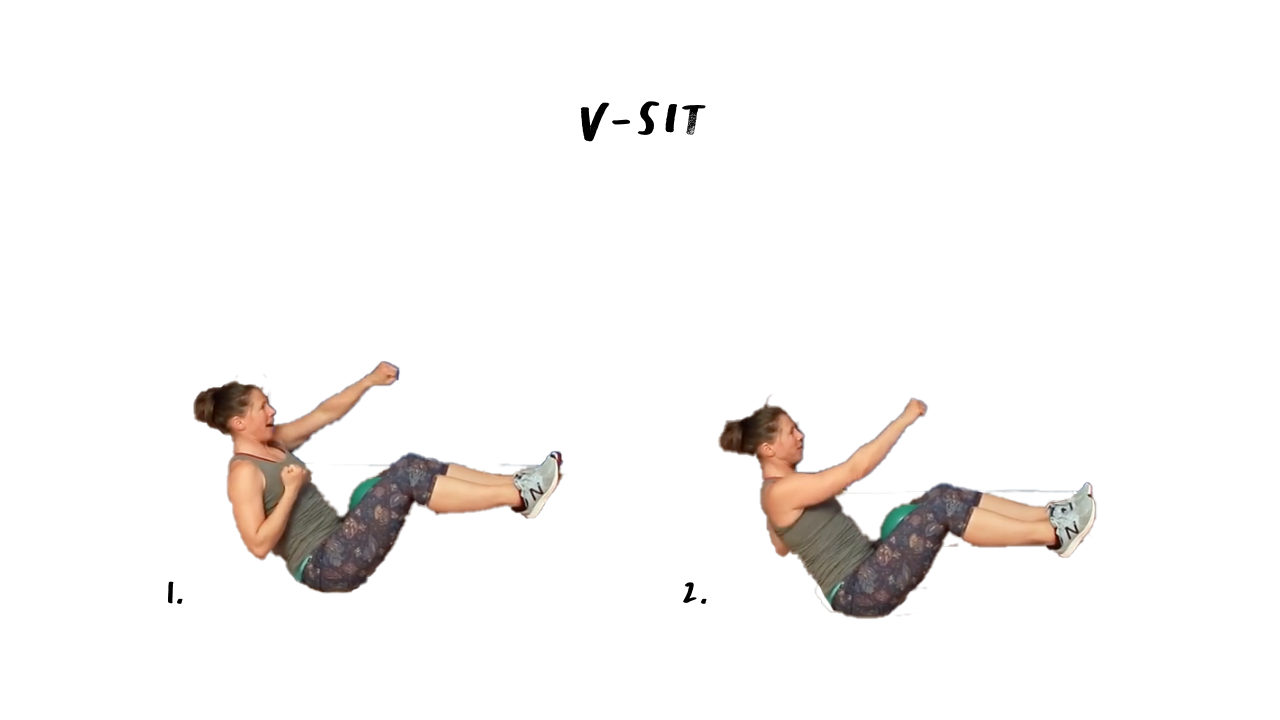Packrafting Strength: 5 Moves for Better Adventures

Get Packrafting-Ready with These Functional Moves for a Strong Summer
Are you ready for an exciting season of packrafting? Whether you’re just getting into the sport or a seasoned veteran, building strength before your first trip is a great way to make the most of packrafting season. Practicing functional movements at home can build muscle memory in the pre-season, jump-starting your packrafting season for strong technique all summer long.
I’ve been packrafting Alaska rivers for years, and I’m also a fitness trainer. I’m excited to share these exercises that I know from personal experience will help you when you’re out on the water this summer.


Strength-Building Moves for Packrafting
First, a story: in the summer of 2018, my husband Luc & I were in the habit of doing a set of pushups every day. Then we left for a 10-day packrafting trip that started with 60 miles (97km) on the Yukon River. We knew that the Yukon moves at about six miles per hour (10 km/hr) and expected to be on it for two days. What we hadn’t expected was a strong headwind. We worked really hard to make those miles, even strapping our single packrafts in a line with driftwood to be more aerodynamic.
After our time on the Yukon, we hiked into the Melozi Hot Springs waterfall. The trip finished in a little town called Ruby, after 50 more miles (80km) of flatwater without much current.
When we got home after the trip, Luc started a set of pushups and then exclaimed that I needed to join him. Our hard work to paddle into the headwind made us significantly stronger – we couldn’t believe the difference. Ever since, we’ve started doing extra pushups before our trips, and factoring in extra time in case there is a headwind!


This story first appeared in Luc’s book The Packrafting Handbook. More on that below!
Upper Body Exercises for Paddling Strength
Pushups & Chest Press
If you think about it, with every paddle stroke you’ll push with one arm, and pull with the other. First let’s work the push part of this motion.
The most simple, equipment-free way to build this kind of strength is a classic push-up. Adjust the exercise to your needs by elevating your hands onto a chair in a full plank position, or on your knees if you’re on the ground.
If you have a resistance band, you can do a variation of a chest press. Wrap the band around your back and hold either side in your hands. Press one arm at a time to imitate paddling. You can do this in a standing position, or to mimic being in your boat, try it from a seated position. Try pressing both arms at the same time if you’re looking for more resistance.
For proper form on the banded chest press, roll your shoulder blades down your back, lock in your core, and keep your movement controlled on the retraction instead of letting the band snap your hand back to your chest.

Rows with Bands or Weights
Then, to counteract the pushing power, you’ll also want lots of pulling strength.
To develop this, we’ll practice rows. My favorite way to do this exercise from home is with Figure 8 Bands, but if you have dumbbells or kettlebells that will work too – or get creative! Some of our Summer Strong folks use a backpack with heavy stuff inside!
If you’re using a resistance band, you’ll stand on one end, hinge your hips back, and pull up & back against the band’s resistance. Make sure to lift & lower slowly & with control. Keep shoulders rolled back and activate your core to resist rotation of the torso.

Core Exercises for Boat Stability
V-Sit for Stability
For this exercise, you’ll want to grab either a pillow or a bender ball. Sit down on the floor in your paddling position. Place the ball or pillow between your knees. Get onto your sit bones, and lean back slightly to engage the core.
From this position, squeeze your knees inward toward the pillow or ball. Try squeezing both sides at once, and alternating pushing only one knee in at a time. For extra challenge, lift one foot off the ground. Another fun challenge is to mimic paddle strokes by moving your arms in a figure 8 pattern with your imaginary paddle, pressing the knee inward on the same side as the pulling arm.
This move not only builds core strength, but the knee squeeze practice builds muscle memory for the skillful use of thigh straps to help stay balanced and strong in your boat through bumpy water. Not every packraft has thigh straps in it, but if you have them they help a lot!

Hip Tilt for Edge Bracing and Recovery
We’re going to use that pillow again for this next move. Place the pillow under one hip, elevating the sit bone. On the same side as the elevated hip, compress your side, imagining that you’re knitting together your low rib and top of your hip bone. Hold this position as if you’re bracing the edge of your boat.
Now, practice recovery: shift your head to the other side, pop your ribs laterally to the opposite side, and push that elevated hip down into the floor. Repeat this action a few times, building that muscle memory for how to restore balance after edge bracing.

Paddle Twist for Paddle Action
For this last exercise, we’re focusing on paddle actions. This move resembles ski twists: both are working on building that spring-loading action in a twisted position.
The key here is to keep your shoulders square while twisting your knees and hips underneath you. Use small stepping or hopping motions, rotate your lower body to the diagonals while you keep your upper body facing forward. From neutral, step or hop to the right diagonal, then to the left diagonal, and back to the right again.
For a simple version of this exercise, keep your arms forward or hold onto the back of a chair. Once you feel confident in that movement, add a figure 8 paddle action, starting small and getting bigger as you gain strength and confidence.
Again, this is all about loading that spring through the twisting action, then exploding from that position with power and control!

You can practice these packrafting specific strength moves in our free Packrafting Workout that I taught in partnership with Alpacka Raft (58 mis). Click here to for the Packrafter’s Delight and get:
- The Packrafter’s Warmup
- The Packrafter’s Workout
- And helpful mindset tools to keep you pumped up and focused for your packrafting adventures!
More Resources for a Great Packrafting Season
Warmup before your paddling day
I’m the friend who always advocates for a warmup before we get started with the day, whether it’s backpacking, mountain biking, or a ski day.. And packrafting is no exception!
In fact, it’s especially important for packrafters & other whitewater paddlers to warmup before the run; many whitewater runs begin with the most technical part, and if our bodies aren’t ready for that it’s easy to get in trouble. We need our bodies to be ready for quick response time & full mobility, whether it’s a snappy paddle stroke, a strong brace with the core, or a quick recovery from a line that didn't go as planned.
This video takes you through a quick 5-minute warmup & shoulder mobility sequence you can do using your paddle before you hit the water. Click here for the Packrafter's Warmup.
Packrafting safety & skillbuilding
For more packrafting guidance, my husband Luc has lots of great resources for you. His book “The Packrafting Handbook” is an awesome guide for technique, safety, and other considerations in the sport. He also offers an online course, “Paddle Up a Level”, for those interested in taking on bigger challenges safely.
And on the Mind & Mountain blog, we’ve got a blog series on safety & route planning for backpackers:
- Safety and Risk Management for Backpacking
- Backpacking Emergency Planning
- Choose a Route for Your First Backpacking Trip
Build strength for the backpacking part of packrafting
If you’re out on a packrafting trip, chances are you’re going to be spending some time on foot, too. Here are some of our tips for building strength for backpacking:
If you’re looking for a more thorough strength training plan for summer adventures, we’ve got options for you! We’re adventurers too, and we get it, strength training can be intimidating and complicated. Let us take the guesswork away for you so you can focus on planning awesome trips!
Summer Strong is a full season program that will power you through your whole summer, specifically designed to meet the needs of summer outdoor sports. You can join for one 6-week training cycle or all three for 18 weeks of training and a Fall fitness peak. This program is designed with flexibility to suit both beginners and more advanced adventurers.


